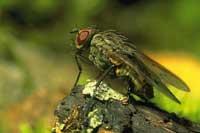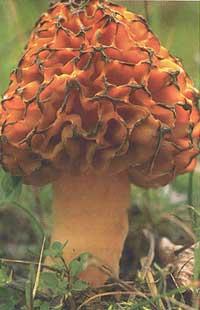Diversity throughout the history of life
1996/05/01 Larrañaga, Jon Iturria: Elhuyar aldizkaria
Incidences of diversity in evolutionary history

Life was born 3.6 billion years ago on Earth. Subsequently, in the 3,000 million years, the only inhabitants of the Earth were unicellular bacteria and algae, until 600 million years ago, as a result of the so-called “explosion” of Kanbria, the phylogenetic trunks of most marine invertebrates emerged. Why then and not before? It is really difficult to explain the increase in diversity that occurred in the Cambrian. In any case, it is clear that all the main models of marine animals emerged at that time and since then, especially since life began to colonize dry land, diversity has been growing, although occasionally there has been some kind of massive rigging.
Before talking about these stimuli, it is advisable to set some concepts. In evolutionary history, living beings have always been destroyed and replaced by new species. However, as has been observed in the fossil record, during some geological periods numerous species have been destroyed. In these cases, it is considered that in a relatively short period of time (between one million and three million years), when more than half of the animal species have disappeared, a massive stimulus has occurred.
The most important mass estequias were that of the late Ordobicico (440 million years ago), Debonia (370 million years ago), the late Permo (250 million years ago), the late Triassic (210 million years ago) and the Cretaceous (66.4 million years ago). In all these stimuli, except in Permiko, 12% of the families of animals of the time disappeared (since there is an exponential relationship between the number of families, genera and species that are destroyed, when 12% of the families disappear, it can be assumed that about 80% of the species disappeared).
The Permian, for its part, was the hardest stimulus ever known, assuming that 54% of families and 95% of marine animals disappeared. However, they are not the only large extensions the Earth has known, but others of lesser importance (see Table 1). In total, it is estimated that 99% of the species that inhabit the Earth have been destroyed.
It is very difficult to explain why these stadiums occurred. Numerous hypotheses have been formulated for this purpose (global climate changes, explosions of supernovae, sea level rise or decrease, alteration of salinity or composition of the seas, large waves of vulcanism, incidence of viral diseases, etc.). have been mentioned), but for now no adequate explanation has been found. The only exception is the Cretaceous Station. To explain the latter, several hypotheses have been formulated, but in recent years the theory is being imposed that a meteorite from outer space hit the Earth.
After each of these stimuli, diversity recovered or in some cases became greater than in the previous period, but for this it had to be several million years. After the final Estonian of the Ordobicico, for example, 25 million years had to pass; after the end of the Debonic, 30 million years; the final stimulus of the Triassic, which occurred before the final Estonian influence of the Persian disappeared, forced 100 million years to recover the lost biodiversity in both stadiums and 20 million years to return to the previous level.
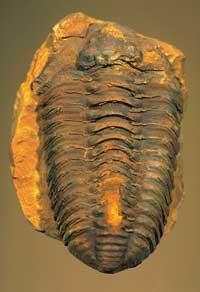
However, the recovery of diversity does not mean that the life of the planet is the same as the previous one. Normally, after the mass appearances, some types of animals that until then were common disappeared completely and the abandoned niches were occupied by other species or groups that until then did not exist, were very scarce or inhabited in other habitats. That is, after the stimuli the number of species has increased, but the new species or groups created have not much to do with the disappeared and have often been of very different origin.
The best known example of this phenomenon known as adaptive radiation is the one that occurred after the disappearance of the dinosaurs: The mammals appeared at the end of the Triassic, more or less next to the dinosaurs, but even the Tertiary were only small and scarce animals that lived in the shadows of the dinosaurs, since the reptiles were the animals that dominated most of the terrestrial niches (and many of them aquatic). When the dinosaurs disappeared, things became very different. Until then, dinosaur niches were free and mammals evolved and took advantage of the possibilities offered by these niches. Thus, mammals multiplied enormously and diversified to present levels.
Plants have also suffered the apparitions, but these have occurred at other times in evolutionary history and have not been so numerous. However, as in the case of animals, there is a decrease in the predominant vegetation for several years in evolutionary history and its replacement by another type of plants, with a progressive increase in general diversity (see figure 1).
| Geologic period | Millions of years | Groups affected |
Precambrian end | 590 | Acrylics |
End of the Lower Cantabrian | 550 | Trilobites |
End of the Cambrian | 500 € | Trilobites |
End of the lower Ordovician | 480 | (1) |
End of the ordovician | 440 | Stromatopóides |
Upper Devonic | 370 | Corals |
Final del Permiano | 250 | Trilobites |
Triassic Final | Services | Molluscs |
End of the Cretaceous | 66.4 | Fish |
End of the Pleistocene | 0.01 | Carnivores |
Human being as a seasonal agent; human influence in the Pleistocene seasons at present
At the end of the Pleistocene numerous species disappeared. At that time (at the end of the last glaciation) the climate was tempering, so the ice masses were receding and at the same time as the large icy areas were exposed, the vegetation was changing. Therefore, it has been considered that the Pleistocene seasons were due to these climatic and ecological changes and that the missing species were cold climate species that could not withstand the new conditions generated in a temperate climate.
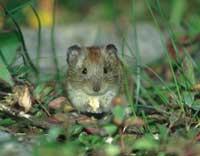
In recent years this approach has been questioned and it has begun to spread that the hunting pressure exercised by man had much to do. To understand the reason for this change of opinion, just look at what happened in North America at the end of the Pleistocene.
At that time, North America was home to numerous mammals and large birds, including horses, bison, camels, antelope, mammoths, lions, wolves, nagas, tapiros, giant birds of the genus Teratornis and ducks unable to fly. 12,000 or 11,000 years ago, the first Indians arrived on the American continent, many of them (73% of the genera of mammals and large birds) disappeared. The fact that these stimuli occurred with the arrival of the Indians to America and that there appeared remains of many of these animals along with human remains suggests that the main cause of the stimuli, or at least one of its causes, was hunting.
Something similar happened in the Pacific islands. In many of these islands, such as Fidji, Tonga, Samoa, Hawaii and New Zealand, remains of numerous missing birds have been found. After the analysis of these tracks it is believed that most birds disappeared 8,000 years ago, when the Polynesians colonized these islands. One of the last islands colonized by the Polynesians was the Easter Island. Upon arrival, h. C. In 300 years the island housed numerous species of fish, turtles and birds. Many of them became the food source of the colonizers and disappeared by overexploitation. Later, probably due to the disappearance of its main source of food, the precursors of the Polynesians also disappeared from the island of Easter.
All this suggests that the phenomenon was general and that the prehistoric man, as he expanded throughout the world, caused the disappearance of many species.
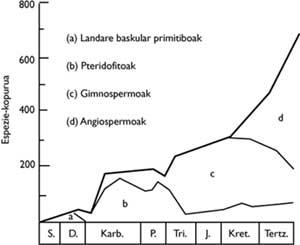
Current situation. Are we facing a new mass stimulus?
In prehistoric times they were only the first link of a long chain without any way of ending human destruction. Since the Pleistocene, the human population has grown steadily and thus our capacity to destroy nature.
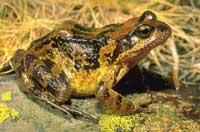
If we calculate the speed at which species are disappearing today and compare this data with those of other massive stimuli, we can think that we could be on the threshold of the greatest mass stimulus ever made by the slaughter we are producing.
At the time of extinction of dinosaurs (and other marine and terrestrial species), the Estonian rate corresponded every thousand years to a species. In the last 50,000 years, the expansion of man worldwide has greatly accelerated the parking rate. Between 1600 and 1900 at least 75 species have disappeared (one every four years). The rate of this century belongs to an annual species and, from 1960, every year 1,000 species disappear. Moreover, there are authors who believe that at the end of this century one million species will have disappeared (that is, 40,000 species each year) and there are more pessimistic calculations.
Destruction of the physical environment | 73% species |
Exclusion of imported species | 68% species |
Chemical contamination - medium alteration | 38% species |
Hybridization with other species or subspecies | 38% species |
Overfishing | 15% species |
Causes of current stations
To avoid the extinction of more species and to maintain diversity at least at present levels, it is essential to know well the causes of extinctions.
The main cause is the fragmentation, degradation and disappearance of habitats. Today most natural systems are disappearing as a result of human activities. A fifth of Brazil's forests, for example, have disappeared; Thailand's last forests are expected to disappear in less than 10 years; in the last 40 years half of Britain's leafy forests have disappeared; in Bangladesh, mangroves cover 12% of the old land and it is expected that by 2000, in the world, 18% of the land suitable for cultivation will be lost. On the contrary, overexploitation is causing the expansion of deserts.
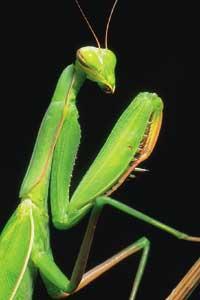
Previous article (Elhuyar. Science and Technology; in number 105) we mention that when habitats are fragmented and isolated from each other, they become “continental islands” and many species disappear. This is the case of the Panamanian region called Barro Colorado. In 1914, once the Panama Canal was completed, the waters of Gatun Lake surrounded this region and made it an island. From then until 1981, 50 of the 237 species of Colorado Mud birds (20%) have disappeared.
The situation elsewhere in the world is as serious as that of Panama. In Israel, for example, the desiccation of the humid regions and the destruction of the Mediterranean scrub, between 1936 and 1976, caused the disappearance of 26 plant species (1% of Israeli vascular plants). 90% of Madagascar's plants are endemic, that is, they only grow there. The fauna is also very peculiar and in addition to the lemurs, inhabits a large number of endemic species, probably many of which we do not know yet.
However, all this wealth is not in a very safe situation. Madagascar has 10 million people and every year 150,000 hectares of forests are released to meet the needs of this crowd. In addition, due to population growth (3% annually), an increase in deforested forest area could be expected in the coming years. Four fifths of the forest have disappeared and many species have disappeared.
The second main cause is hunting. As we have seen, it is believed that some species of the Pleistocene had disappeared due to human predation. Later, already in historical times, man has hunted and extinguished other animals. Cases of doda or migratory pigeon, although very different, are representative examples.
Dodoa ("Raphus cucullatus") was a large, stony bird that lived exclusively on the island of Mauritius. Very clumsy, when the hungry Dutch sailors arrived on the island, it became the favorite and easiest prey and disappeared in a few years, last dodo XVII. He died at the end of the 20th century.
The case of the migratory pigeon ( Ectopistes migratorius) is very different. Unlike dodo, the dove did not reside on an island, but in North America, it was very abundant and in autumn it formed large groups (it was estimated that a single variety of doves had 2,000 million specimens) and migrated to the south of the United States or to Mexico. During the migration it was one of the main pieces of North American hunting and, despite its abundance, probably the most abundant in the continent, could not withstand the hunting pressure. The last great journey, composed of 250,000 copies, was seen in 1896 and it is believed that less than 10,000 copies had escaped. The last wild specimen was captured in 1900 and his last specimen died in 1914.
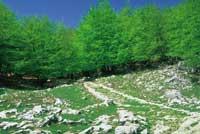
Currently, the main risk of certain species remains the human predator, legal or not. Another of the main biological causes of the seasons is the invasion of alien or allochthonous species. The human being, intentionally or involuntarily, has introduced in the new regions in which these species did not exist, alien species such as cholarres, rats, canes, rabbits, foxes, cats, goats, rodents and fish. Often these species have become competitors or predators of the autochthonous and have been destroyed. It is evident, for example, the influence of rats. These animals have reached almost every corner of the world and many of the colonized islands have disappeared numerous birds. This phenomenon has occurred mainly in islands, but there are also cases in continents.
In other cases, allochthonous species have caused new diseases that have caused the disappearance of native species. The decline in bird diversity in Hawaii since 1850 (85% of endemic species have disappeared or declined greatly) is due, for example, to the disease spread by the Culex quinquefasciata mosquito that arrived in Hawaii in 1826.
Pollution and other environmental changes are also a known cause of the seasons. Toxic substances that are poured into air, water or soil, nutrients that eutrophize lakes, rivers and seas, etc. influence biodiversity. One of the best known cases is acid rain. These rains increase the acidity of lakes and rivers, causing enormous damage to the inhabitants. It is enough to lower the pH 6 of the waters so that the crabs of those waters disappear, when the pH 5 lowers most of the fish disappear and when the pH is 4 can only live the eels. At present, about 10,000 Swedish lakes barely survive due to acid rain.
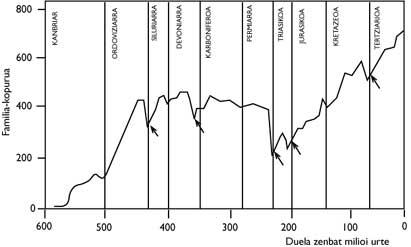
Society facing the challenge of maintaining diversity
Faced with all these problems, we have already begun to realize the need to maintain diversity. In recent years, numerous new actions have been initiated and an unprecedented social debate on biodiversity has been generated. Biologists have also not given up on this challenge, and now we are talking about conservation biology.
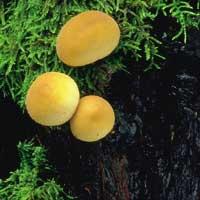
However, this does not guarantee success. We do not yet know all the plant and animal species of the planet and many of them will disappear shortly. Often, experts should work with populations composed of a small number of specimens and we still do not know very well what areas should be concentrated forces: the conservation of habitats or species. Given the seriousness of the problems, scientists and technicians are forced to improvise, in the conviction that anything is better than doing nothing and, in addition, the desire for conservation is still with the ignorance of the different sectors of society or with serious socio-economic problems.
Today we know perfectly well that many of the creatures of the planet are disappearing, but we do not know the damage that this can bring. We know that life on Earth has the capacity to recover from such situations, but for this we must spend millions of years. Before we put the Earth back into this kind of trance, are we not going to do anything?

Gai honi buruzko eduki gehiago
Elhuyarrek garatutako teknologia




